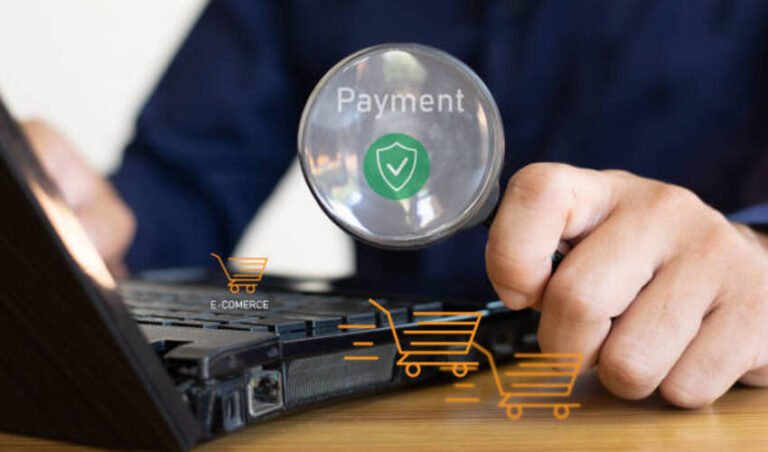PCI DSS stands for Payment Card Industry Data Security Standards. It is a worldwide model created to safeguard cardholder information and decrease fraud risks. In this article, we are presenting to you a step-by-step PCI DSS guide for E-commerce.
Introduction
Compliance is not only a contractual or legal obligation for e-commerce businesses. It is also a trust factor that directly affects customer confidence and reputation. Therefore, we are presenting to you a step-by-step guide to assist your online store safe payment data and ensuring compliance with confidence.
Comprehend The Requirement of PCI DSS
PCI DSS is structured around 12 fundamental needs, entailing everything from safe encryption and networks to monitoring and assessing. These needs are grouped into 6 objectives.
- Create and maintain a safe network
- Safeguard cardholder information.
- Uphold a susceptibility management program.
- Apply strong access control tips.
- Monitor and assess networks regularly
- Maintain an information security policy.
- Maintain a data security plan.
Knowledge of these rules assists you in mapping out where your e-commerce organization fits in.
Determine The Level of Your PCI DSS
Every business does not have the same obligations. The PCI Security Standards Council demonstrates merchant levels based on the number of transactions.
- Level 1 is more than 6 million transactions yearly.
- Level 2 is 1 to 6 million transactions.
- Level 3 is e-commerce transactions between 20,000 to 1 million.
- Level 4 is less than 20,000 transactions yearly.
Your level demonstrates the sort of evaluation needed (3rd-party audits or self-assessment questionnaire).
Select The Correct Payment Integration
One of the very effective techniques to decrease PCI DSS space is by outsourcing payment processing. Options entail:
- Complete API Integration: Provides you with complete control, but needs the stringent compliance techniques you manage confidential information directly.
- Hosted or iFrame Fields: Payment arenas are hosted safely by your payment provider; however, they appear incorporated into your checkout.
- Redirect Techniques: Customers are redirected to a 3rd party for payment. It reduces payment, which decreases your data exposure.
For small and medium-sized e-commerce companies, outsourcing payments can be a safe and cost-effective approach.
Safeguard Your Infrastructure and Website
Attackers aim to target your site, even if you don’t save cardholder information. Important practices entail:
- Segmentation: Retain cardholder information ecosystems separate from other mechanisms.
- Patch Management: Upgrade server software, plugins, and CMS platforms regularly.
- Intrusion and Firewalls Identification Systems: Chunk unauthorized access.
- TLS/SSL Certificates: Encrypt all information conveyed between your users and site.
Safeguard and Encrypt Cardholder Information
If you manage payment information:
- Utilize strong encryption for information at rest.
- Implement higher TLS 1.2 for information in transit.
- Never save confidential verification information after authorization.
Apply tokenization where possible to substitute card numbers with different tokens.
Authentication and Control Access
Only authorized staff must access the systems that manage payment information.
- Impose role-based access control (RBAC).
- Need multi-factor authentication (MFA).
- Review and retract the unimportant accounts.
Observe, Assess, and Log Activity
Proactive observation assists to identify breaches early:
- Pen testing: Perform annual tests to reveal weaknesses.
- Vulnerability Scans: Do quarterly scans via Approved Scanning Vendor (ASV).
- Monitoring and logging: Trace all access to system modifications and cardholder information.
Full PCI DSS Validation
Depending on the business level:
- Attestation of Compliance (AOC): Submit documentation to acquire card or bank brands.
- On-Site Evaluation: Need for level 1 merchants, done by a qualified security assessor (QSA).
- Self-Assessment Questionnaire (SAQ): For small businesses with easy payment setups.
Educate Your Staff
Human mistake is sometimes the weakest link. Offer regular training on:
- Incident response processes
- Safe management of confidential information
- Recognize phishing tries
Maintenance of Continuous Compliance
PCI DSS is not just a one-time task, but it is a continuous commitment.
- Annual evaluation
- Observe evolving needs
- Constantly upgrade processes and policies
Final Thoughts
E-commerce companies excel based on trust, and nothing underestimates customer confidence more than a data breach. Following these steps enables you to understand needs, outsourcing safely where possible, applying encryption, observing constantly, and authenticating yearly. This allows you to meet PCI DSS compliance with confidence. More significantly, you will create a good shopping experience that keeps customers coming back.
Frequently Asked Questions (FAQs)
What is meant by the PCI DSS guide?
PCI DSS stands for Payment Card Industry Data Security Standards. It is a worldwide model created to safeguard cardholder information and decrease fraud risks.
How to comprehend the requirements of the PCI DSS guide?
- · Create and maintain a safe network
- · Safeguard cardholder information.
- · Uphold a susceptibility management program.
- · Apply strong access control tips.
- · Monitor and assess networks regularly
- · Maintain an information security policy.
- · Maintain a data security plan.
How to maintain continuous compliance?
- · Annual evaluation
- · Observe evolving needs
- · Constantly upgrade processes and policies






